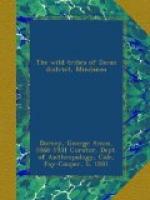FIG. 58. INCISED DESIGNS ON A BAMBOO LIME HOLDER.
FIG. 59. CLOTHES HANGER.
Figs. 60 and 61 show characteristic designs which are embroidered on jackets or carrying bags. All these are added with the one idea of beautifying the garment, without any thought of copying some living form. This is true also of the incised zigzag lines, scrolls, and meander patterns seen on the silver breast disks (Fig. 53), and those stained on palm bark hats (Fig. 47).
FIGS. 60 AND 61. EMBROIDERED DESIGNS ON JACKTES[sic] AND CARRYING BAGS.
Tobacco pouches (Fig. 62) are often completely covered with bright colored geometrical designs embroidered in trade yarn. This work, which is quite unlike the other decoration used by this people, was probably introduced along with trade yarn and analine[sic] dyes.
FIG. 62. TOBACCO POUCHES.
CONCLUSION
From the material now at our disposal certain general conclusions can be drawn.
A comparison of the physical measurements indicates that no group is of pure race. There are significant variations between members of different tribes, but these occur also between individuals of the same village. The average person in each group is short-headed, yet long-headed individuals are found in every tribe and variations just as great as this appear in the other measurements and observations.
We have previously noted the evidences of an aboriginal pygmy population, that has been partially absorbed by intermarriage with the later comers.[1] In all the groups, except the Bila-an, the percentage of individuals showing evidences of Negrito blood increases as we go from the coasts toward the interior, until in such divisions as the Obo and Tigdapaya of the Bagobo, and the Tugauanum of the Ata, practically all the people show traces of this admixture.
[1] Negrito are reported from the Samal Islands in the Gulf of Davao.
In addition to the types already described there are found in each tribe individuals who in all but color might readily pass as white men. These persons freely intermarry with the rest of the population, and it is no uncommon thing to find in one family children of this sort as well as those showing Negrito characteristics or those conforming to the average type.[2]
[2] This will be discussed in a forthcoming publication on Physical Types. That paper will present a full series of measurements accompanied by photographs, including the Bukidnon of North Central Mindanao in which tribe this type is more frequently seen than in Davao District.
The facts indicate that the tribes now found in Davao District did not reach the coasts of Mindanao at the same time, but rather that they represent several periods of migration, of which the Kulaman is the last. This tribe, which only a few generations ago seems to have been made up of seafarers, has not yet entirely adapted itself to a settled existence and it is only within the lifetime of the present generation that its members have taken seriously to agriculture.




